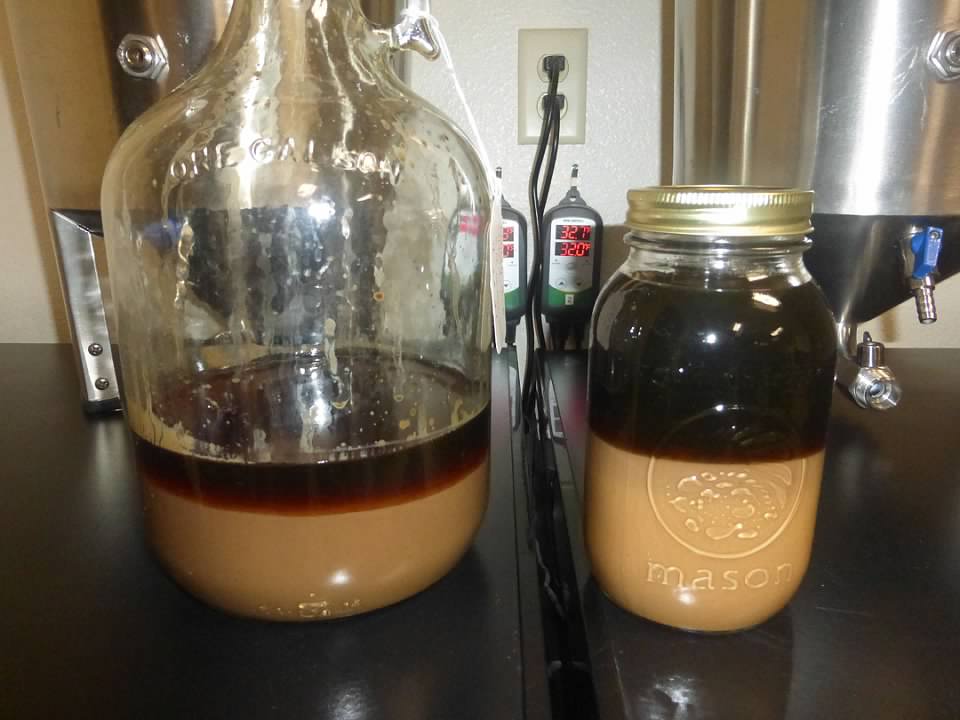Ok...you got me going in a whole other direction now. We are getting ready to keg 10 gallons of Tex-Festbier, brewed with Texas Premium Pilsner Malt (look for a full review to come). The yeast will be harvested, as always, but this time the yeast volume will be divided in two.
My yeast slurry is stored in gallon glass jugs. It is allowed to sediment out, with about two inches of crystal clear beer forming on top of the yeast cake after a few days. This beer is then decanted, and the remaining yeast is normally pitched in this manner. Only last time did I feed boiled and cooled wort into the yeast, gave the jug a good shake, at which time it awoke with violent explosions.
Our sediment is peanut butter like in viscosity. It requires a huge effort to get it suspended in solution prior to pitching.
I estimate that 2/3's of the slurry is pretty much solid (peanut butter like) yeast cake. It is free of undesirable items. Any particulate matter that is there is microscopic in size, as to the naked eye it appears hyper-clean.
Because the harvesting is done in my brewery / shop, in the open air, certainly wild yeast and/or dust has been introduced.
Suggestions on how we can improve our operation are welcome.
I will get some good up close photos of our yeast, and post them here. I'm certain that most of the brewers on this forum are more advanced in this than we are.
All of the beers brewed with the multi-generational yeast have been very good. So as of today, that is not something that we are concerned about.
These pictures do not represent Diamond we harvested. Instead, Wyeast London Ale on the left, S-04 on the right.
